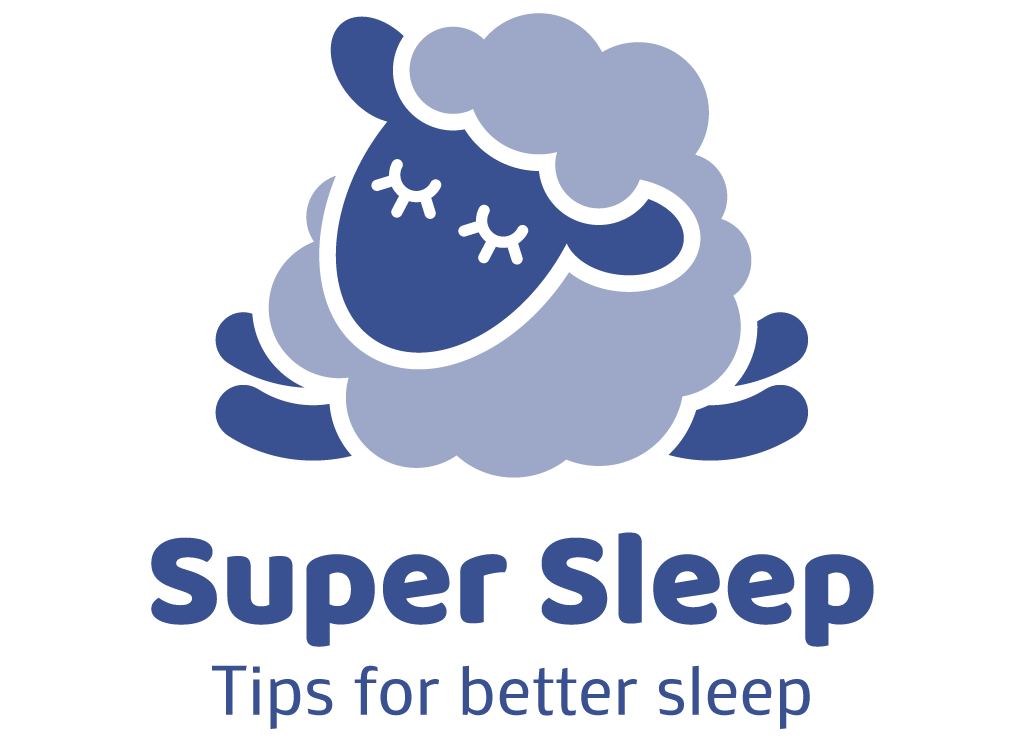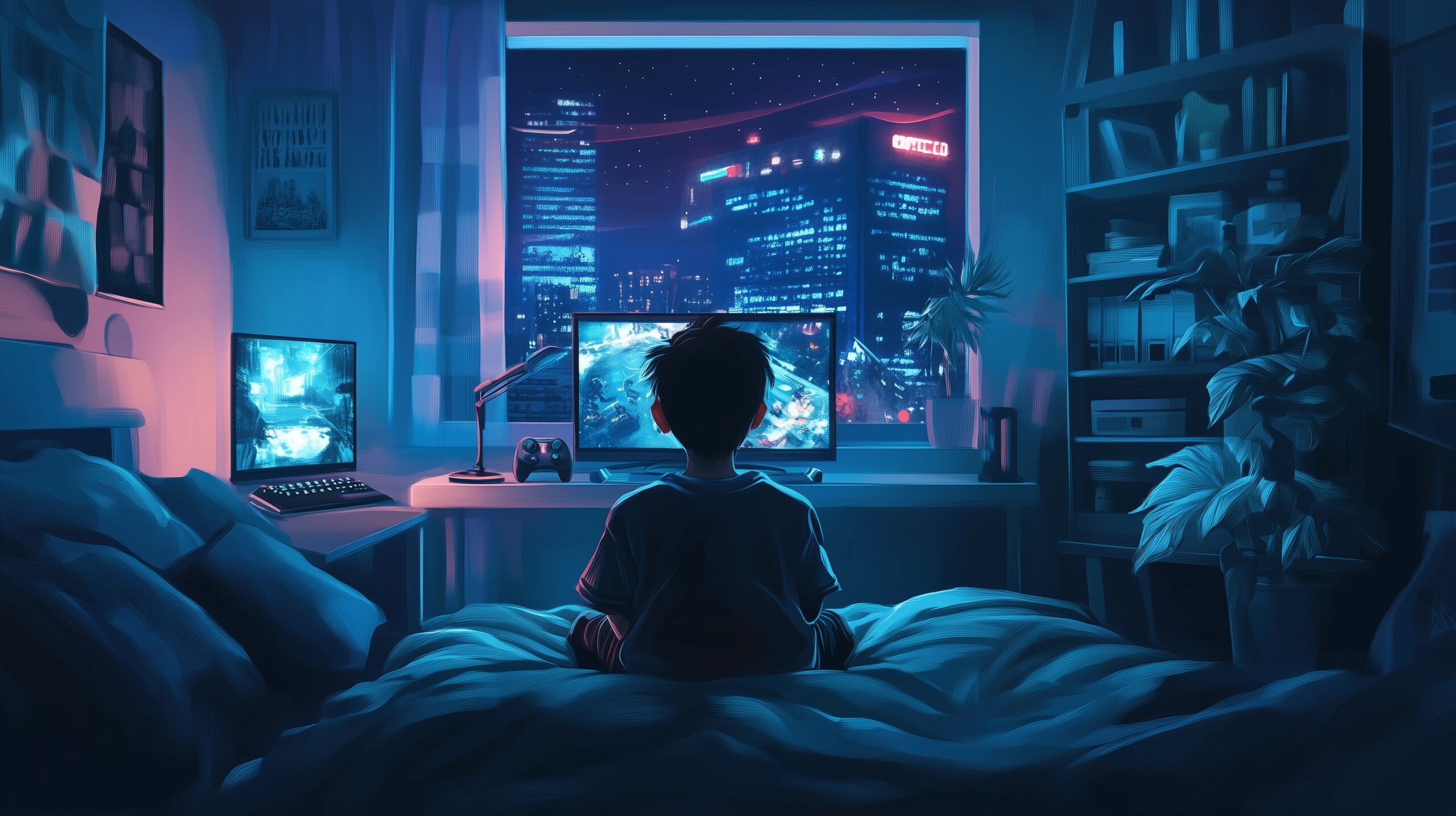In the digital age, screens are an integral part of the daily lives of children and adolescents. While video games and social media offer opportunities for entertainment, learning, and social interactions, excessive use can disrupt sleep, impacting the physical and mental health of young people. This article explores the negative effects of screens on the sleep of children and adolescents and provides practical tips to reduce their impact and promote healthy sleep habits.
1. How Screens Disrupt Sleep for Children and Adolescents
Prolonged screen exposure, especially in the evening, has both direct and indirect effects on young people’s sleep.
- Blue Light: Screens emit blue light that inhibits the production of melatonin, the sleep hormone, by disrupting the body’s internal clock. Blue light mimics daylight, which delays sleep onset.
- Mental Stimulation: Video games, especially those with challenging levels or online interactions, increase mental activity and excite the brain, making it hard to transition to sleep.
- Addiction and Dependence: Social media and video games are designed to capture users’ attention, leading them to spend more time online. This dependence can create compulsive checking behaviors, even at night, and delay bedtime.
The consequences of these habits include poor sleep quality, shorter nights, difficulty concentrating, and emotional issues such as irritability or anxiety.
2. The Negative Effects of Screens on Sleep and Health
Sleep deprivation related to excessive screen use can have numerous health consequences for children and adolescents:
- Mental Health Issues: Sleep deprivation is associated with an increased risk of depression, anxiety, and impulsive behaviors.
- Decreased Academic Performance: Sleep is crucial for memory and learning. Fatigued young people have more difficulty concentrating, which can affect their academic performance.
- Risk of Weight Gain: Lack of sleep disrupts metabolism and can increase appetite, leading to weight gain and a higher risk of obesity.
3. Recommendations to Reduce the Impact of Screens on Sleep
While screens are unavoidable, there are ways to limit their impact on the sleep of children and adolescents.
a. Set Screen Time Limits
Encouraging young people to respect reasonable screen time limits is essential for preserving their sleep. Setting clear boundaries can help control screen use:
- Establish a “Digital Curfew”: Set a cutoff time (for example, 1 to 2 hours before bedtime) after which screen use is not allowed. This gives the brain time to wind down and melatonin levels to normalize.
- Limit Session Lengths: Avoid long gaming or social media sessions without breaks. Set a maximum time per day based on the child or adolescent’s age.
b. Create a Screen-Free Bedtime Routine
A consistent and calming bedtime routine helps relax the body and mind, preparing for a good night’s sleep:
- Soothing Activities: Replace screens with relaxing activities like reading a (non-digital) book, journaling, or meditating. These activities help disconnect and promote sleep.
- Encourage Non-Screen Hobbies: Guide young people towards physical or creative activities during the day, such as sports, music, or drawing, to avoid excessive screen dependence.
c. Use Blue Light Filters
If screens are necessary in the evening, activating blue light filters on devices can help reduce sleep disruptions.
- Blue Light Filter: Most phones, computers, and tablets now offer a “night mode” or “blue light filter” option that reduces blue light emission.
- Blue Light Blocking Glasses: Additionally, blue light-blocking glasses can be an option for teens who need to work on a computer in the late afternoon or evening.
4. Manage Screen Addiction and Raise Awareness of the Risks
Managing screen addiction requires raising children and adolescents’ awareness of the impacts of excessive screen use on their health.
- Open Discussions: Talk with young people about the negative effects of screens on sleep and health, explaining how sleep deprivation can affect their well-being.
- Set Screen Reduction Goals: Set goals together for reducing screen time and celebrate efforts and progress to reinforce motivation.
- Encourage Group Activities without Screens: Organize family or group activities to show children that there are other ways to have fun and socialize.
5. Promote a Healthy Sleep Environment
A comfortable and sleep-friendly environment is essential to counterbalance the negative effects of screens:
- Screen-Free Bedroom: If possible, encourage young people to keep their bedrooms free of screens, including phones, tablets, and computers. This reduces the temptation to check devices during the night.
- Proper Temperature and Lighting: Maintain a cool, dark room to promote deep, restful sleep.
Helping Children and Adolescents Get Restorative Sleep
Video games and social media are now part of the lives of children and adolescents, but excessive use can harm their sleep and overall well-being. As parents and educators, it’s essential to set healthy boundaries and raise young people’s awareness of the impact of their digital habits. By adopting strategies like limiting screen time before bed, creating screen-free sleep routines, and managing screen addiction, it is possible to help children and adolescents enjoy restful nights of sleep, supporting their growth and emotional balance.
By guiding young people towards healthy sleep practices and promoting a balanced approach to screen use, you contribute to their improved health, focus, and long-term emotional well-being.

